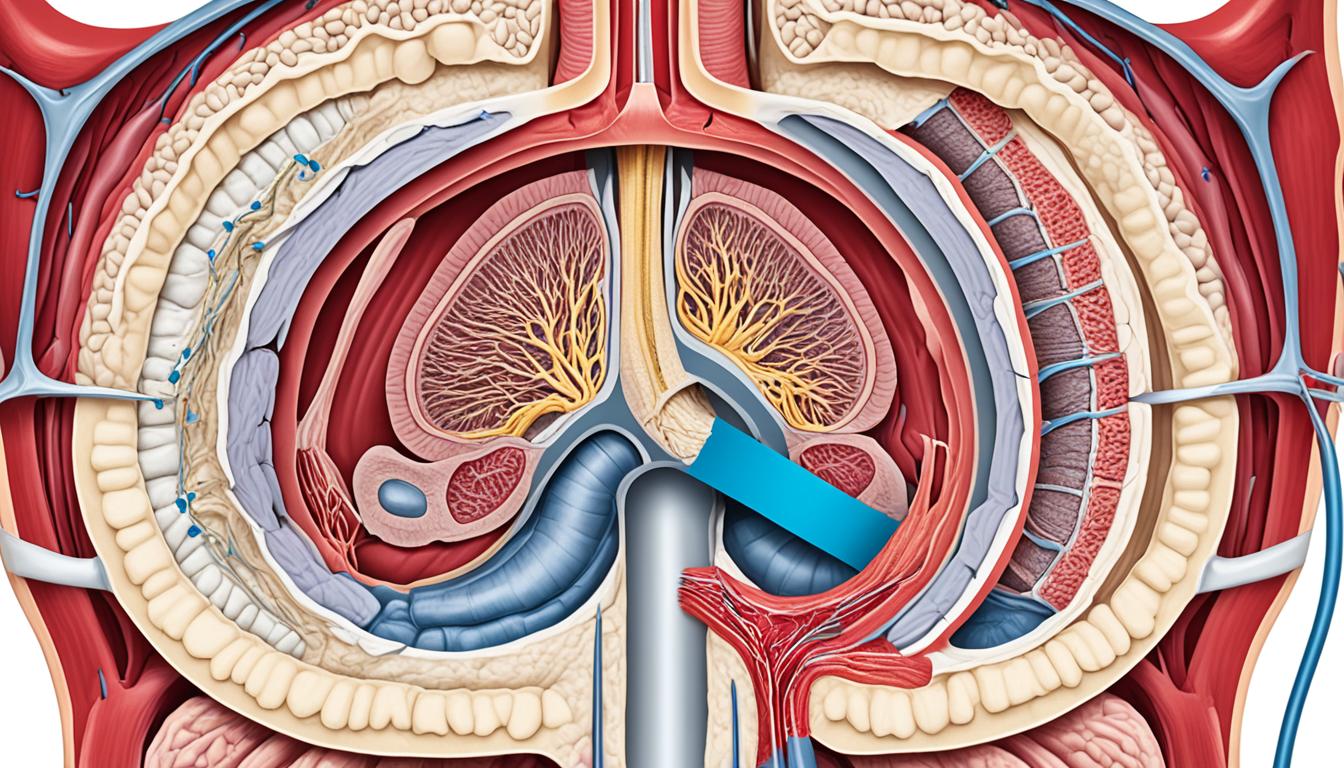A hernia is when organs or tissues bulge through a weak spot in the body’s muscle or tissue walls. Inguinal hernias happen in the groin and can be painful. They are more common in men. But, women can get them too. There are other types of hernias, like femoral, hiatal, and umbilical hernias.
The cause of hernias varies. They might be due to age, gender, how active you are, coughing a lot, being very overweight, or other health issues.
You might see a bulge in your groin with an inguinal hernia. It could get bigger when you cough or push down. You might feel pain or aching in your groin. Lifting things might hurt too. If it’s not treated, it could cause a blockage in your intestines.
To diagnose it, a doctor will examine you. They’ll check for a bulge and might do more tests like ultrasounds or scans to be sure.
There are a few ways to treat an inguinal hernia. If it’s small and doesn’t bother you, your doctor might say to just keep an eye on it. But, for most hernias, surgery is needed. There are two main types of surgeries. One involves a cut in the groin. The surgeon then sews or puts a mesh to fix the weak spot. The second kind is less invasive. It uses small cuts and a special tool to fix the hernia along with a mesh.
Stem cell therapy is a new treatment being explored. The idea is for stem cells to heal the damaged tissues and lower the risk of problems from hernias.
Key Takeaways:
- Inguinal hernias occur in the groin area and can cause discomfort and pain.
- The causes of hernias can vary, including factors like age, gender, physical exertion, chronic coughing, and obesity.
- Symptoms of inguinal hernias include a noticeable bulge in the groin area, aching or discomfort, and pain while lifting objects.
- Diagnosis is typically done through a physical examination and may involve additional imaging tests for more accurate results.
- Treatment options for inguinal hernias range from watchful waiting to surgery, depending on the severity of the condition.
- Stem cell therapy is an emerging treatment option that offers potential benefits for tissue repair and regeneration.
Understanding Inguinal Hernias: Causes, Symptoms, and Diagnosis
Inguinal hernias happen often in the groin area. They develop due to issues like a thin abdominal wall from birth or heavy pressure in the stomach. They are more common in men.
A key sign is seeing a lump in the groin. This bump might get bigger when you cough or push down. It can cause pain, burn, or bring general discomfort. Sometimes, it leads to the pain and growth of the testicles.
Doctors find inguinal hernias by checking for a lump in the groin. This is a clear sign of the issue. For a closer look, they might use tests like ultrasounds or CT scans to confirm the diagnosis.
Knowing what brings on inguinal hernias, their signs, and how they are found is critical for proper care. When healthcare workers spot and treat the real cause, they can suggest ways to reduce symptoms. This helps to better the lives of those affected.
Causes of Inguinal Hernias:
- Congenital weaknesses in the abdominal wall
- Increased abdominal pressure
- Heavy lifting or straining
- Certain medical conditions that cause chronic coughing
- Obesity
- Pregnancy and childbirth
Symptoms of Inguinal Hernias:
- Noticeable bulge in the groin area
- Burning or painful sensation
- Discomfort in the groin area
- Pain and swelling around the testicles (in some cases)
Diagnosing Inguinal Hernias:
Doctors check for a bulge in the groin during a physical. They may also use ultrasounds, CT scans, or MRI for a closer look.
Treatment Options for Inguinal Hernias: Surgery and Stem Cell Therapy
The main way to treat inguinal hernias is through surgery. This is especially true for those that are big or cause a lot of pain. There are two main types of surgeries: open and minimally invasive.
In open surgery, a cut is made in the groin. Surgeons then push the bulge back in and fix the hole using stitches or a mesh. It’s a common and effective way to treat hernias.
Minimally invasive surgeries are becoming more popular. These include laparoscopic or robotic techniques. They use tiny cuts and special tools to fix the hernia with the help of a mesh.
Aside from surgeries, doctors are also looking into stem cell therapy for hernias. This approach uses the healing abilities of stem cells to repair and regrow damaged tissue. It aims to lower the chance of problems after treatment. Stem cell therapy is still being studied, but it could be a new and promising way to deal with hernias.

